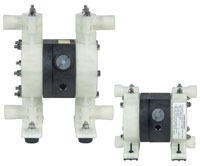But here’s where you get into trouble when mixing different colors of antifreeze or different types of antifreeze. Car makers select an antifreeze chemistry based on the types of components (fittings, seals, tubing) of each particular cooling system’s internal components. You can mix two different colors of the same kind of coolant without any problem whatsoever. Chrysler and Ford use hybrid organic acid technology coolant (HOAT).
This coolant’s inhibitor package is slightly different from traditional high-silicated green coolant, enough that it’s expected to provide double the service life, but is. Many people have asked whether you can mix antifreeze colors , and many times they are told FALSE information. Well, finally Astral comes up and brings you the truth about it all! The color of healthy engine coolant is green (for ethylene glycol) or orange (for Dexcool).
A rusty color indicates that the rust inhibitor in the coolant has broken down and it can no longer control rust and scale buildup. What happens when you mix red and blue antifreeze in your car? You should not mix OAT based formulas with IAT formulas.
The result is typically turning your coolant into sludge due to a chemical reaction. Keep in min OAT based formulas are still a developing technology. There are some “universal” formulas that claim compatibility with other IAT. Silicate (green) type antifreeze does not mix with red type antifreeze. Never mix the two colors in a cooling system.
The organic acids in red type will cause precipitation of silicates in the green type and corrosion protection is greatly reduced. Red type antifreeze is good for five years. Orange antifreeze should not be mixed with green antifreeze because they are not compatible.
Q: Mixing red and green coolant in the radiator.
That was an old type of antifreeze where the glycol lasts maybe three years max. So you’ve got to change the coolant maybe three years or every 10miles. The modern coolant comes in various different colors and red happens to be one of them. It often can last five years or 150miles. So it’s a better antifreeze to use.
Confusion continues over coolant colors for cars. Of course, there is still the good old green stuff, but there is also orange, yellow (gold and amber), re pink, blue an if you mix the wrong things together, brown. Despite the rainbow of colors , all antifreeze starts out colorless. Coolant (Antifreeze) can be found in more than color which can be confusing for people who don’t know what each color indicates.
Orange coolant is a modern style of anti-freeze that contains organic acids as their corrosion inhibitors, and usually uses ethylene glycol as it’s main anti-freeze component. That sai if you merely need to top up the expansion bottle, you may be able to get away with adding only distilled water, which would be compatible with any coolant. Even the SAE says you can mix the two. The antifreeze does not jelly. You can buy orange EG and you can buy green Dex-Cool (or equivalent).
To be on the safe side read the Label along with the formulation. You can not mix Zerex GOwith Dex Cool or the regular Green antifreeze. Life was simple then, just mix one part of the green stuff to one part water and you were good to go for up to three years.
Different colored antifreeze is used to identify the type of antifreeze being used. Inorganic Acid Technology (IAT) antifreeze is green in color. Organic Acid Technology (OAT) antifreeze is orange, re green, pink or blue.

Learn About the Heavy Duty Delo Antifreeze Products Available for Your Vehicle. Regular Prestone is yellowish-green and should never be mixed with Prestone Dex Cool. Toyota has two formulations and should not be mixed. Life would be so mush easier if thest antifreeze companies would denote a lettering or numbering.
One can mix two different colors of antifreeze as long as they are the same kind. Certain vehicles require anti freeze that is phosphate free. Dexcool alone will turn acidic if the cooling system gets air trapped in it. So to avoid that problem, return the Dexcool and keep using the regular green antifreeze. Depending on what color coolant you are mixing, different substances in the types of coolant can react chemically with each other in myriad ways from becoming sludge and clogging the small passages in the system and ruining your radiator (not to mention the risk of overheating your engine), to becoming corrosive to the many hoses and lines it runs.
Marine antifreeze is non-toxic to humans, animals, aquatic life, etc. If for example, it were mixed with ethelene glycol (green), but was still mostly red in color after mixing, it could easily be fatal to any creature that accidentally ingested it. That is non-typical case, but so is mixing any antifreeze.
If it still has some antifreeze dye color, slowly fill the system with plain water, with all air bleeds open. Dispose of the coolant in an environmentally responsible manner, please. Engine coolant, also known as antifreeze, is mixed with water to keep the radiator from freezing in extreme cold and overheating in extreme heat. There are many different types of coolant, so it’s important to know what variety is right for your car or truck.
Stick with the colour antifreeze that was in there, even if it means paying a few quid extra for antifreeze from the main dealer. Also, mixing brands of antifreezes can cause unwanted chemicals. For example Toyota red antifreeze contains silicates that American antifreezes will not contain. These chemicals if added to American glycol based antifreeze can precipitate and float as particulates around your cooling system.
Since antifreeze is clear when it is manufacture and water is clear, dye is used to color the antifreeze for identification and marketing purposes.
No comments:
Post a Comment
Note: only a member of this blog may post a comment.